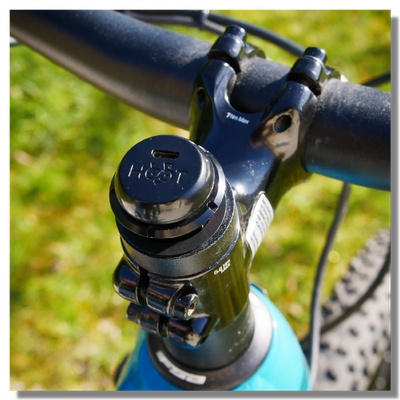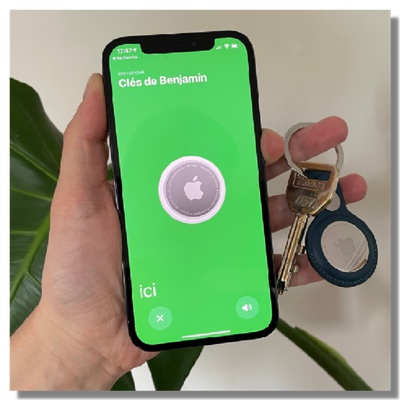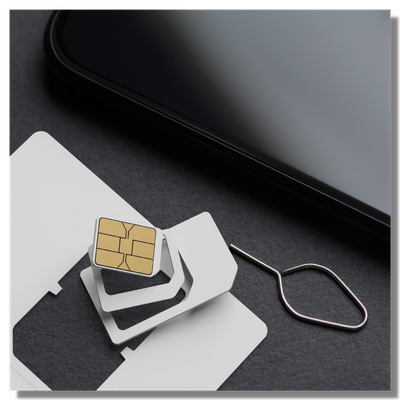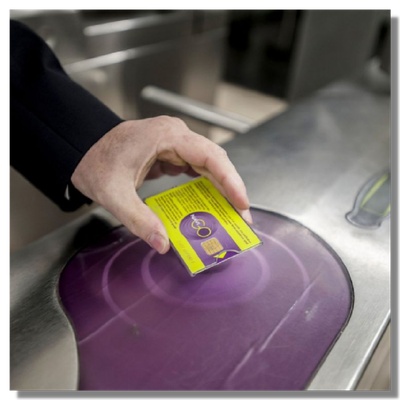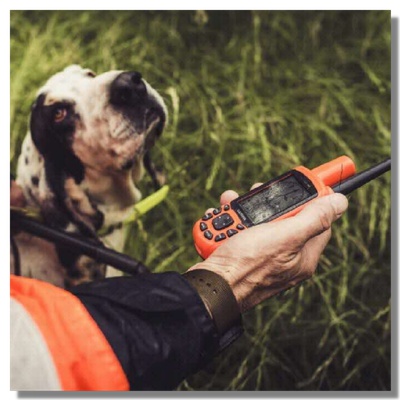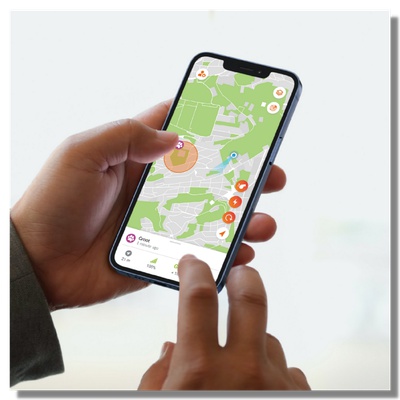GPS tracker with no monthly fee
Check out this comprehensive guide to help you choose the best GPS tracker for your needs.

Check out this comprehensive guide to help you choose the best GPS tracker for your needs.
This guide will help you understand the different technologies available and help you make the right choice depending on your needs. We share hands-on information for you to make the best decision.
No one likes paying for a subscription. That's probably what drives most people to look for a GPS tracker without a subscription. Quite often, we also want a long battery life or a mini GPS tracker that is more convenient. But beware! A GPS tracker without monthly fees will always have shortcomings when it comes to tracking a dog or a cat (or any other living being), depending on the technology used.
What you want to use your GPS tracker for will determine the type of product you should choose. There are several technologies available on the market today, with or without a subscription. Keep in mind that the same technology can be completely unsuitable for one use, but perfect for another.
If you want a GPS tracker to help you find your keys or your car, then a GPS tracker without SIM card and without subscription will be perfect. On the other hand, if you want to track a living being, it will be better to use a technology with real-time tracking and without range limit.
You can download this free guide to help you make the right choice. This guide will answer all your questions:
And much more…
Click on the title of the chapter you want to read.
To make the right choice for your GPS tracker, you need to know what you want to use it for. The same technology can be completely unsuitable for one use while perfectly suited for another.
In the event your vehicle gets stolen, using an adapted GPS tracker will allow you to know where it is and share the information with the police. The purpose of a GPS tracker for cars is to know its position in case of theft but not to follow its every movement. Real-time tracking, which is possible using a GPS with subscription, is not essential. A tracker without subscription, connected to the Sigfox or Lora low power networks, will be perfectly suited.
If the low power trackers do not offer real-time GPS location, they nevertheless work without distance limit. They also feature a long battery life, so you don't have to take the tracker out of your car or motorcycle to charge it too often. Finally, the fact that they work with no subscription or with a subscription included, makes them more interesting financially. For us, this is the best option to track a vehicle.
It can quickly become very expensive to own a bicycle in the city, as theft is very common. Without a dedicated space in your building, it is sometimes impossible to protect your bike, hence the need to use a GPS tracker for your bike.
GPS bike tracking works the same way as car tracking: you don't need to track it in real-time, but you do need to track it with no distance limit. We recommend a discreet GPS tracker that does not need to be charged everyday, while being small enough to be hidden on the bike itself. Once again, Lora and Sigfox low power technologies offer the best deal.
Sometimes, we can spend hours looking for things. The remote control, keys, wallet or even our phone, so many objects that make us waste a lot of time looking for them every day... But using a GPS tracker without subscription will help prevent that by locating the nearby tracker, usually indoors, in this case distance is not a problem, so you don’t need a tracker that works over long distances. However, the size is an essential aspect: the best option will be to choose a Bluetooth GPS tracker.
You probably already heard of Apple's Airtags. It is in fact a mini Bluetooth tech device that you can attach to your keys to avoid losing them. There are other brands of key locators like Tile Mate or Invoxia. For example, you can use it to find your phone that fell behind your sofa by using the object locator by making it ring. Bluetooth is perfect for locating objects.
When it comes to your loved ones, choosing the right GPS tracker is a safety purchase, and not just a comfort purchase as for your keys and other personal belongings. Indeed, when it comes to taking care of your loved ones, it is only natural to want the best to make sure you can locate the person in time. Real-time GPS tracking is essential, but also with no range limit, to be able to find your child no matter where he/she is.
Unfortunately, no GPS tracker without monthly fee seems to meet all the requirements. Some lack either real-time tracking or unlimited distance tracking, thus they do not fully ensure the safety of your loved ones. Only GPS trackers with subscription (working on conventional phone networks) will provide you with these two essential features.
Pet tracking works the same way as tracking a loved one. Indeed, looking for a lost pet is stressful. Real-time GPS tracking with no distance limit will be essential if you lose your dog or your cat.
We think this is the most important consideration when making your purchase. A living being is constantly on the move, especially if the lost dog or cat is frightened. If you want to find it quickly, you need to have up-to-date information. Once again, GPS trackers for pets without subscription do not meet the requirements of this use.
Explore the main technologies of GPS trackers. From conventional networks, to Bluetooth, through low power networks and radio frequencies.
Conventional networks are those we use every day: cellular network, 3G and 4G. Those terms are part of our daily life, but do you know what they really are?
Basically, the second generation of cell phone networks, allowed the first SMS and MMS to be sent. 3G allowed you to browse the Web, watch videos, or download your favorite music and games on your phone. 4G and LTE (Long Term Evolution) refer to the same concept – this network offers high speed browsing and allows you to watch HD videos on your smartphone.
Cell phone antennas are found everywhere across the country. Carriers set up antennas to cover the territory and provide services to their customers.
These networks are not free of charge, but provide unlimited tracking (thanks to nationwide coverage) and real-time tracking. There is no limit to the number of messages sent (they are private and therefore there is no risk of network saturation) nor is there any slowdown when sending messages (message transmission latency applies, as in the case of low power networks).
These paying networks are accessible thanks to a SIM card. This SIM card is already included when you buy a GPS for dog or a GPS for cat with subscription.
Sigfox and Lora networks are two new networks that have been created to support the rise of smart objects. They are also known as LPWAN networks, which stands for "Low Power Wide Area Network". Their promise: low cost and much lower battery consumption than conventional cell networks.
These low power networks are based on private antennas connected to public frequencies, so there is no license to pay to use them. As these frequencies are open they cost no money to operate for the network providers (Sigfox and Lora), apart from the hardware itself (installing antennas to cover the country). This is what allows manufacturers to offer GPS trackers without subscription or with subscription included during the first years of use (this is the case of French company Invoxia).
On the other hand, the number of daily messages is limited for each device connected to the networks (to avoid saturation of the frequencies used), and the two-way communication (messages sent AND received) is poorly managed. There are also serious latency issues with message processing, which can lead to long delays in sending and/or receiving messages.
The public Sigfox and Lora networks do not make it possible to efficiently find a lost pet due to the absence of real-time GPS tracking. Indeed, the saturation of the networks causes delays in processing the messages (latency principle) sent by the tracker, each position is therefore displayed with a delay of 1 to 2 minutes.
However, for a car or a motorcycle, this type of network is perfectly suited. You don't need to track every movement of the vehicle, but only the final position of the car or motorcycle (the thieves will eventually stop).
Bluetooth is a technology that enables two tech devices to connect to each other. This connection is only possible at short distances, up to fifty yards in an open environment (much less indoors, since the signal is weakened by walls in a house). This is the technology used to connect your smartphone to a wireless speaker, for example.
Bluetooth trackers are not true GPS trackers. They allow two types of tracking.
The closer your phone is to the smart keychain, the stronger the Bluetooth signal will be, giving you a clue as to where it is. So you'll be guided gradually to the place where you've lost your phone (did you look between the pillows?).
But this first feature only works within the maximum range of Bluetooth, a few yards. Bluetooth keychain manufacturers have now introduced the concept of "crowd GPS" or "community GPS" to fix this issue. The idea is to rely on all the people who have the same Bluetooth GPS receiver as you.
If one of them passes by your Bluetooth tracker, if the GPS and Bluetooth of their phone are switched on, then the position of your smart keychain will be updated using the position of the phone of this same person.
Knowing that more and more people are turning off their phone's GPS and/or Bluetooth to save their battery, this reduces the chances of getting an updated location from your tracker with crowd GPS. The chances are even lower if your tracker is on the move, since this product doesn't support real-time location update (once the community member has left, you will have to wait for another member to pass by to get the new location).
Take into consideration the fact that you'll fully depend on the community and its size to find your tracker beyond a few yards. Your surroundings will also impact its efficiency, as population density is not the same in a large city as in the countryside...
RFID or "Radio Frequency Identification" is a technology found in everyday objects: in electronic chips for pets, in public transport cards, or even in credit cards. It saves, stores and records data on different mediums, and can then be read with an adapted reader at close range.
Therefore, RFID is a tracking system embedded in a chip that can be used to follow products during the production process up to distribution for example. But this technology does not allow remote or real time tracking. Whatever your needs, this technology will be useless to you.
The radio frequency works thanks to a transmitter and a receiver which communicate together through radio frequency. This technology has a limited range of a few miles at most.
This system is generally very expensive and quite bulky. We do not recommend them except in very specific cases like dense forests where cell phone networks are almost non-existent. However, this system provides real-time tracking, which is a major asset in areas with no network.
It is worth mentioning Garmin products, which make the best use of this radio frequency technology. Garmin hunting collars allow you to follow the movements of your hunting dog for example using the transmitter collar.
18 questions you need to ask yourself before buying a GPS tracker for your loved ones!
Discover the features of a GPS tracker with subscription, and in which situation this type of product is best used.
While it may be nice not to have to pay a subscription fee for your tracker, it's not always the best option. This is especially the case when it comes to a living being, whether it is a relative or a pet. Here are the two main features of subscription-based trackers.
Thanks to a SIM card, the tracker is always connected to the manufacturer's server. In other words, it will be able to send its GPS position continuously and thus ensure real-time tracking. You can get an updated position every 10 seconds: a true game changer when losing your loved one in a crowd, or your pet in the park.
These regularly updated locations allow you to follow every single move of the tracker directly on your phone, in real-time. This is the most important aspect to consider when choosing a tracker. A living being is constantly on the move, especially if the dog or cat is lost or frightened. Therefore, it is essential to have regular updates to quickly find it.
A GPS tracker fitted with a SIM card is truly autonomous: it can communicate its position wherever it is, provided there is a GSM network.
This means it will work with no range limit. This means that your dog or cat can be miles away from you without being limited in tracking its movements. Most GPS trackers with subscription for dogs and cats even work in hundreds of countries at no extra cost. The same logic applies to tracking an elderly person or a child.
Lastly, it is worth mentioning that GPS trackers with a subscription benefit the reliance of the cellular network: an unlimited amount of data can be sent, along with phone calls. In addition to real-time tracking, this allows for advanced features such as ringing or vibrating, which will prove useful for training your dog or cat.
In the end, it is essential to consider the purpose of the collar. The best quality of service when it comes to the safety of a loved one or a pet is provided by GPS trackers with subscription.
But if you need to find a set of keys, a car or a bike, a GPS tracker without subscription will be perfect. Take the time to think about your needs to make the best possible choice.
18 questions you need to ask yourself before buying a GPS tracker





